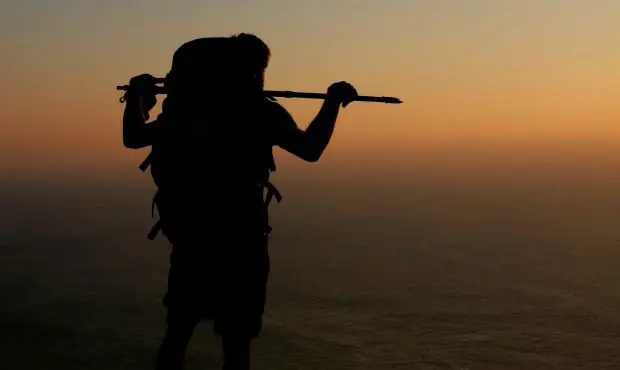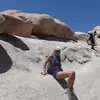
With nothing but the boots on your feet and the pack on your back, the mountain is your playground. But, if you're trekking out into the woods to find a camping spot for the night, you don't have a whole car to fill with coolers, bags and camping stoves. With minimal room, knowing how to pack a backpack is critical. Before getting started, keep these three basic packing rules in mind:
- Maintain weight distribution: Heavier things should go in the center of the pack and close to your body, such as your tent bag. You can place medium weight items up the sides; this provides the perfect stability for your trek.- Split heavier items: If you're camping with others, be sure to split the weight of heavier, communal items between all of you.
- Tighten straps: When the load shifts, so does your center of gravity. Tighten your compression straps so the pack, and its contents, stay in place as you traverse a variety of terrain.
With the necessary rules in place, use these four steps to learn how to pack a backpack before stepping out onto the trail.
Outdoors Events Near You
Step 1: Choose Your Tools Wisely
If you can't decide whether you need it or not, you probably won't. Unless it's weather or safety related, you can ditch it for more important things. To make sure you take only what you need, check the local weather and wilderness alerts.
Step 2: Fill Empty Spaces
Before piling gear into your pack, consider what empty spaces you can fill with something else. For example, you can stuff a shirt or utensils into an empty pot or pan. This allows you to pack as efficiently as possible.
Step 3: Pack In Order of Need
While you want to heed the weight distribution suggestions, you also want the items you'll need most readily available. For example, extra water should be placed toward the bottom center of your pack, but your primary water bottle should be outside the pack or at the very top. As you learn how to pack a backpack with your particular gear, this will become easier to do.
The top of the pack is also a good place for adverse weather gear, snacks, and sunscreen.
Step 4: Attach Other Gear Externally
While it's ideal to fit all your gear inside the pack, it's not necessary. Even on the outside, it's important to remember weight distribution, and how these attachments will affect that. Keep in mind that these items may swing or catch on plants as you walk by them.
Your sleeping bag can attach at the bottom of your bag as many packs are now made for this technique. Other items that can be strapped to the outside include small pots or pans, a rolled-up sleeping pad, flashlight, and hiking poles.
Trekking through the secluded woods is an amazing experience. Knowing how to pack a backpack, however, helps make the experience that much more comfortable. Remember to pack only what you need, in a way that is conducive to balance and stability.
 Book your next camping trip
Book your next camping trip



